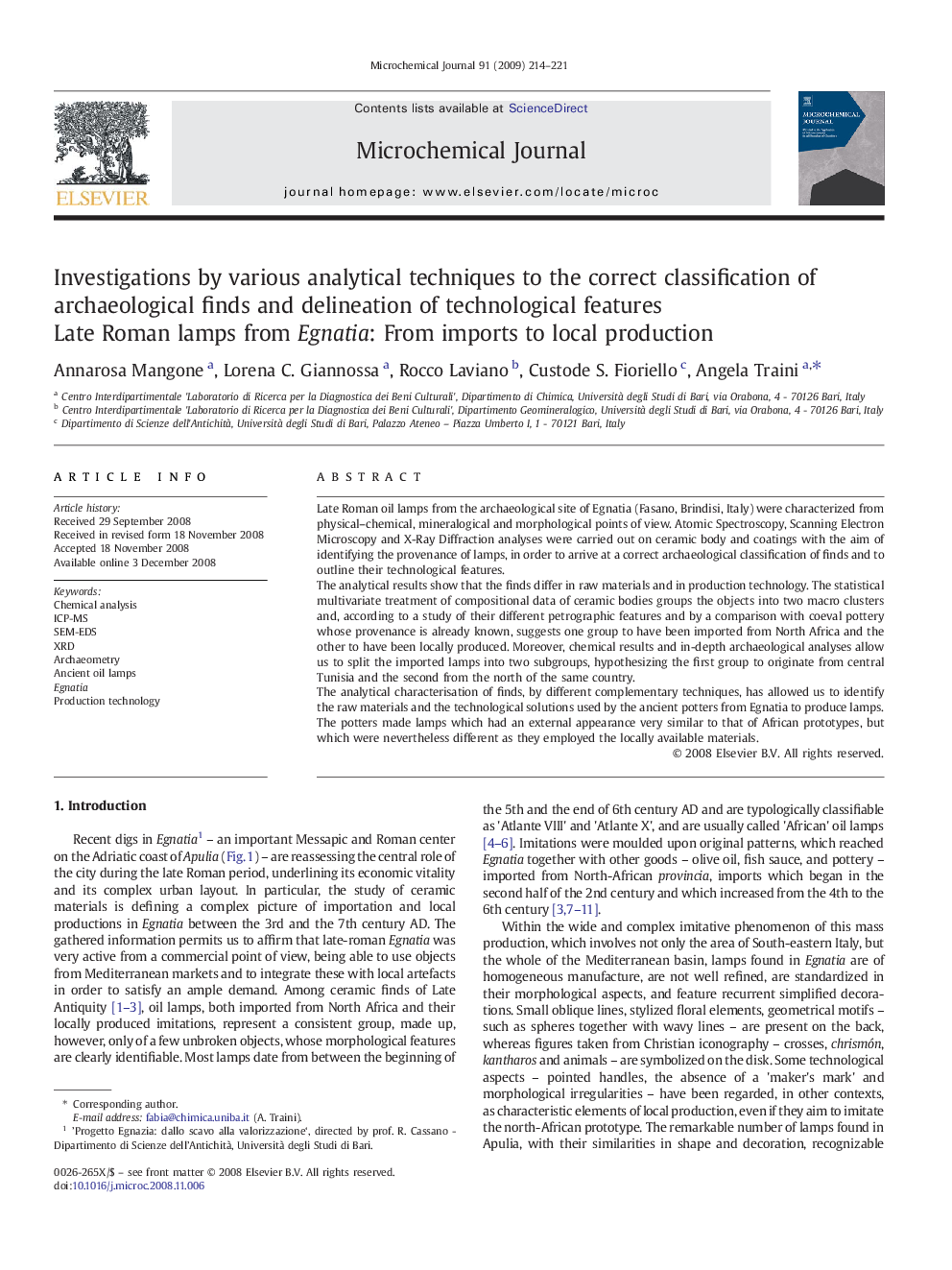| Article ID | Journal | Published Year | Pages | File Type |
|---|---|---|---|---|
| 1228164 | Microchemical Journal | 2009 | 8 Pages |
Late Roman oil lamps from the archaeological site of Egnatia (Fasano, Brindisi, Italy) were characterized from physical–chemical, mineralogical and morphological points of view. Atomic Spectroscopy, Scanning Electron Microscopy and X-Ray Diffraction analyses were carried out on ceramic body and coatings with the aim of identifying the provenance of lamps, in order to arrive at a correct archaeological classification of finds and to outline their technological features.The analytical results show that the finds differ in raw materials and in production technology. The statistical multivariate treatment of compositional data of ceramic bodies groups the objects into two macro clusters and, according to a study of their different petrographic features and by a comparison with coeval pottery whose provenance is already known, suggests one group to have been imported from North Africa and the other to have been locally produced. Moreover, chemical results and in-depth archaeological analyses allow us to split the imported lamps into two subgroups, hypothesizing the first group to originate from central Tunisia and the second from the north of the same country.The analytical characterisation of finds, by different complementary techniques, has allowed us to identify the raw materials and the technological solutions used by the ancient potters from Egnatia to produce lamps. The potters made lamps which had an external appearance very similar to that of African prototypes, but which were nevertheless different as they employed the locally available materials.
